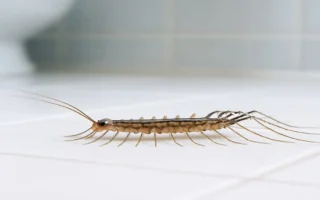It’s a common scenario: you spot ants marching across your kitchen counter or bathroom floor, but no matter how hard you look, you can’t find where they’re coming from. This can be incredibly frustrating, as it’s challenging to address the problem without knowing the source. However, don’t worry – there are steps you can take to track down the ants’ entry point and put an end to the invasion.
Understanding Why Ants Invade Houses
Food and Water Sources
One of the primary reasons ants enter modern home is in search of food and water. These tiny creatures are always on the lookout for food, and your kitchen or pantry may be an attractive target. Crumbs, spills, and unsealed food containers can all draw ants into your home.
Shelter and Nesting Opportunities
In addition to food, ants are also seeking shelter and nesting opportunities. Your home provides a warm, dry environment that’s perfect for establishing a colony. They may nest in wall voids, behind baseboards, or in other hidden areas.
Why the Source May Not Be Visible

Sometimes, the source of an ant infestation may not be immediately visible. This can happen if the ants are entering through tiny cracks or gaps in your home’s structure, or if they’re nesting in hard-to-reach areas, such as inside walls or under flooring. It’s essential to be thorough in your search and not give up too quickly.
Different Ant Species and Nesting Habits
Not all ants are the same, and different species have different nesting habits. For example, carpenter ants may nest in wood, while pavement ants prefer to nest in soil or under stones. Understanding the type of ant you’re dealing with can help you narrow down potential nesting sites.
How Ants Communicate and the Trail System Works
Ants use a complex communication system to find food and navigate back to their nest. They leave behind a chemical trail, called a pheromone trail, that other ants can follow. This is why you may see a line of ants marching in a single file. Understanding how ants communicate can help you track them back to their source.
Common Mistakes When Searching for the Ant Source
Overlooking Less Obvious Entry Points
One common mistake people make when searching for the source of ants is overlooking less obvious entry points. While you may be focused on sealing up visible cracks and gaps, ants can enter through tiny openings that are difficult to spot. Be sure to check around pipes, electrical outlets, and other potential entry points.
Focusing Only on Visible Trails or Dead Ends
Another mistake is focusing only on the visible ant trails or dead ends. While following the ants’ path can lead you to their nest, sometimes the trail may disappear or lead to a dead end. Don’t give up if this happens—keep searching and be patient.
Ignoring Seasonal Ant Behavior and Nesting Cycle
Ant behavior and nesting patterns can change with the seasons. In the spring and summer, ants may be more active and likely to invade homes. Understanding these seasonal patterns can help you anticipate and prevent infestations.
Mistaking Unrelated Insects or External Ants for Indoor Infestation
Finally, be careful not to mistake unrelated insects or external ants for an indoor infestation. Sometimes, ants may enter your home briefly to forage for food but not establish a nest. Make sure you’re dealing with an actual infestation before taking action.
Step-by-Step Guide to Locating the Ant Source

Tools and Supplies Needed
To effectively locate the source of ants in your stylish home, you’ll need a few tools and supplies:
- Flashlight
- Magnifying glass
- Chalk or tape to mark ant trails
- Bait stations to lure ants out of hiding
How to Observe Ant Trails Carefully
Start by carefully observing the ant trails in your home. Follow the ants as they move, noting where they’re coming from and where they’re going. Use your flashlight and magnifying glass to get a closer look at their path.
Methods to Track Ants Back to Their Nest
There are several methods you can use to track ants back to their nest:
- Follow the ant trail: Carefully follow the ants as they move, taking note of any turns or changes in direction.
- Use bait: Place small amounts of bait, such as sugar or protein, near the ant trail. This can lure the ants out of hiding and help you track them back to their source.
- Monitor over time: Ants may not always lead you straight home to their nest. Be patient and monitor their activity over several days to get a better sense of their patterns.
Checking Unusual Locations
Don’t limit your search to prominent locations. Ants can nest in a variety of unusual places, such as:
- Behind appliances
- Inside walls
- Near foundations
- Around vents and plumbing
Be thorough in your search and check these outdoor areas.
Using Non-Invasive Methods to Confirm Source Area
If you’re having trouble locating the ants’ nest, try using non-invasive methods to confirm the source area. For example, you can place bait stations in different locations and monitor which ones attract the most ants. This can help you narrow down the general area of the nest.
Monitoring Activities Over Several Days
Remember that finding the source of an ant infestation may take time. Be patient and monitor the ants’ activity over several days. Please keep track of their trails, the times of day they’re most active, and any changes in their behavior.
Signs of Nests
Several signs may indicate the presence of an ant nest:
- Soil piles or small mounds
- Wood damage or sawdust
- Small holes or cracks in walls or floors
- Moist or damp areas
Keep an eye out for these signs as you search for the ants’ source.
Immediate Steps to Take When You Can’t Find the Source

Using Ant Baits and Traps Effectively
If you’re unable to find the source of the ants, you can still take action to control the infestation. One effective method is to use ant baits and traps. Place these in areas where you’ve seen the most ant activity, and be sure to follow the manufacturer’s instructions carefully.
Natural Deterrents to Reduce Visibility and Entry
There are also natural deterrents you can use to reduce ant visibility and entry into your smart home. For example, you can use vinegar, lemon juice, or essential oils like peppermint or tea tree oil to create a barrier that ants won’t cross. These natural remedies can be a helpful addition to your ant control strategy.
Importance of Cleanliness and Removing Attractants
One of the most important steps you can take when dealing with ants is to keep your home clean and tidy. Ants are attracted to food and water sources, so be sure to clean up spills and crumbs promptly, store food in sealed containers, and take out the trash regularly. By removing these attractants, you can make your home less appealing to ants.
Sealing Obvious Cracks and Entry Points
While you may not be able to find the exact source of the ants, you can still take steps to prevent them from entering your home. Seal up any noticeable cracks or gaps in your home’s structure, such as around doors and windows, to create a barrier against ants. This can help reduce the number of ants entering your luxury home.
When to Call Professional Pest Control Services
If you’ve tried these immediate steps and are still dealing with a persistent ant problem, it may be time to call in professional pest control services. A trained technician can help identify the source of the infestation and develop a targeted treatment plan to eliminate the ants for good.
Prevention Strategies to Keep Ants Out for Good

Home Maintenance Tips
To prevent ants from invading your home in the first place, it’s essential to keep your home well-maintained. This includes:
- Sealing cracks and gaps in your home’s structure
- Repairing any water leaks or moisture issues
- Keeping your home clean and free of food debris
By taking these steps, you can make your home less appealing to ants and reduce the likelihood of an infestation.
Routine Inspections of Vulnerable Spots
Another key prevention strategy is to conduct routine inspections of vulnerable spots in your home. This includes areas like doors, windows, and the foundation, where ants are most likely to enter. By regularly checking these areas, you can catch potential entry points before they become a problem.
Landscaping Advice
The way you landscape your yard can also impact ant infestations in your home. To reduce the risk of ants entering your home, keep mulch, plants, and moisture sources away from your home’s walls and foundation. This can help create a barrier against ants and make your home less attractive to them.




